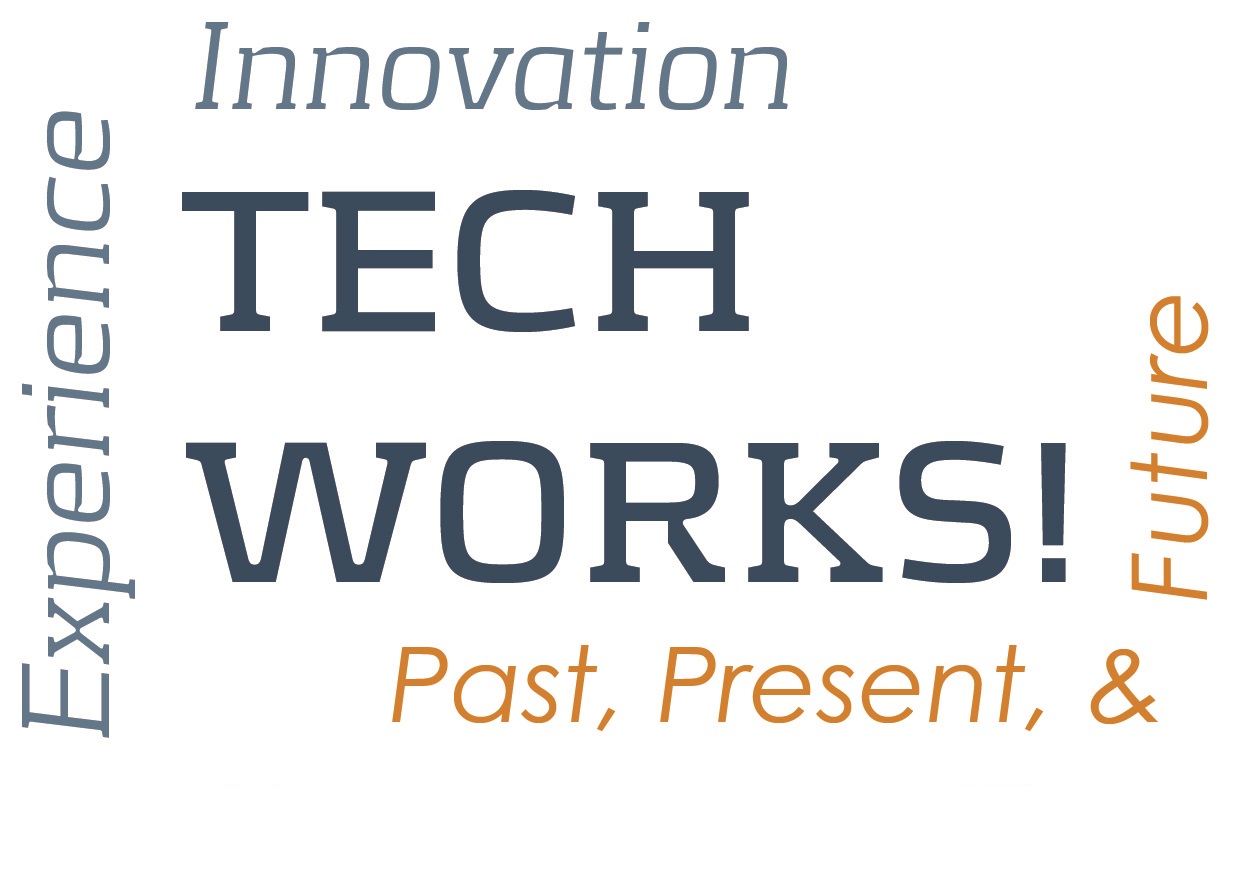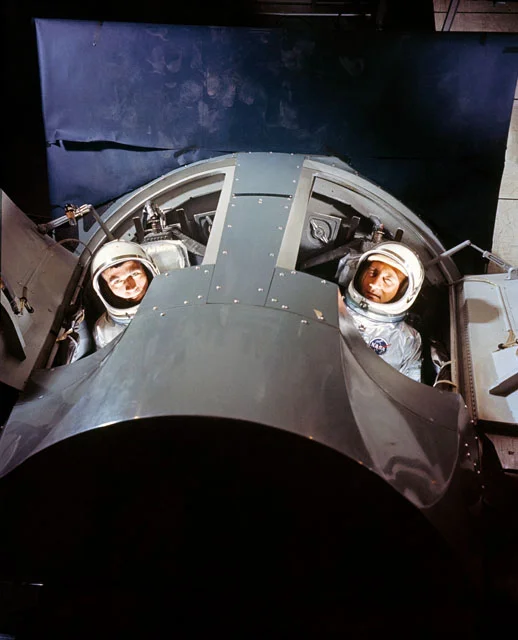1966 White House telegram congratulating success of simulator & it's VISual System, developed by GP-Link, Bingnamton, and subcontractor Farrand Optical, Bronx
50th Anniversary of Gemini XII mission - Liftoff November 11th, 1966, 15:46 EST, Splashdown November 15th, 14:21 EST. Gemini XII, piloted by Buzz Aldrin and Jim Lovell, was the last of the ten two-astronaut missions designed to test the procedures, esp. rendezvous and docking, needed to navigate to, land on, and return from the moon. The Gemini XII crew's skill in Extra Vehicle Activity (EVA) and docking demonstrated that NASA was ready to shoot for the moon. Central New York technology from Binghamton (GP-Link flight simulators, GAF-Anscochrome film), Johnson City (GE-inertial navigation), Norwich (GLA rocket stage separation igniters), and Owego (IBM computers, Titan avionics) supported Gemini program success.
Gus Grissom and John Young, crew for 1st manned Gemini mission training In mission simulator BUILT BY GP-Link for McDonnell Aircrart, St. Louis, MO
Buzz Aldrin & Jim Lovell in training for gemini Xii
15 Dec 1965 - first Space Rendezvous - Gemini VIA (Schirra & Stafford) photographed from Gemini VII (Borman & Lovell) with Anscochrome film.
Exploring space with big ideas and miniature devices
From big ideas to miniature devices, pioneering technologies critical to space exploration from Mercury to Orion have been delivered by small communities within 75 miles of Binghamton, NY - hometown of IBM and Link flight simulation.
Navigating through the vast expanse of space depends on two big ideas from the Binghamton area: inertial navigation guidance systems using fist-sized gyroscopes* and high-fidelity mission simulators to hone astronauts' skills in real- time control of experimental spacecraft. The Apollo Mission and Lunar Module Simulators, each weighing 40 tons and controlled by 112 kilobytes of computing capacity, were envisioned and built at the Binghamton airport by General Precision-Link. Since the beginning of US space exploration, simulator technology pioneered by Link has been the backbone of NASA astronaut training. Sixteen of the 20 man-years NASA invested in Apollo simulated training were logged in Link devices. Skylab and Shuttle simulators were built by successor companies Singer-Link and Link Simulation & Training, respectively. Without Link simulators, Apollo XIII would have been a fatal endeavor, rather than NASA's finest hour. From John Glenn to Space Shuttle crews, the informal NASA metric for mission success has become "it was just like the simulator."
Space travel also depends on two miniature technologies from the Binghamton region. Electronic circuit packaging capable of withstanding the extreme vibrations and temperatures of space travel was perfected at IBM Owego.Triggers to ignite stage separation for Titan's RL-10, Saturn's J-2, and today's OMS cryogenic engine that will take flight to Mars in 2018 are products of a company from Norwich, NY (pop. 8,000) - GLA, later Simmonds Precision, now Unison-GE.
Central NY products also include: thermal shock resistant glass windows for spacecraft and specialty MACOR hinges for the Space Shuttle from Corning, Inc., John Glenn's Mercury 7 camera and color film for NASA missions from Ansco-GAF; aluminum door hinges by Phillips Foundry, and launch vehicle and real-time computers for Apollo and 4 Pi systems for the Space Shuttle, as well as components of the Lunar Roving Vehicles (Apollo 15-17) from IBM Owego, now Lockheed Martin Owego. A disproportionate number of astronauts - Daniel Bursch, Eileen Collins, Doug Hurley, and Doug Wheelock - nicknamed the "Route 17 Gang" - hail from this sparsely populated area.
These NASA mission-critical technologies, to be joined by the full range of pioneering avionics from central New York, will be showcased in the Out Of This World Technology experience at TechWorks!, a destination being developed in Binghamton.








